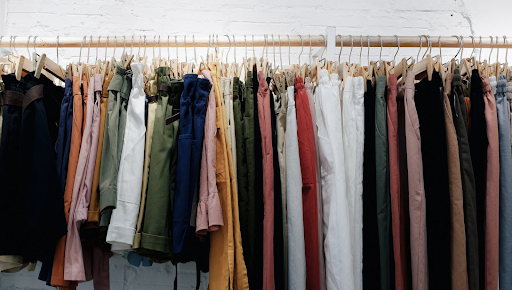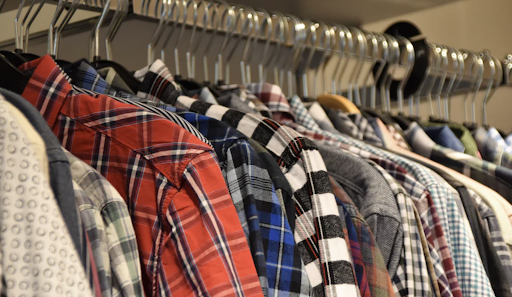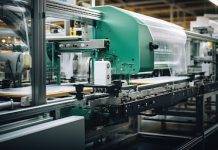The apparel industry has been widely criticized for its harmful environmental impact. The creation of new clothing each year contributes significantly to environmental degradation, such as abusing natural resources and leaking harmful chemicals into waterways. Nevertheless, there is a long-term solution that benefits both the environment and consumers’ wallets: buying second hand clothing bales.
Used clothing bales are wholesale bundles of secondhand clothing supplied to individuals and supplying companies. Consumers can decrease waste and releases of greenhouse gasses, help preserve the environment, and support sustainable consumption by purchasing these bundles instead of new garments. In this post, we will look into the ecological benefits of buying old clothing bales, analyzing how well this simple choice may significantly affect the earth’s well-being.
Table of Contents
What Exactly Are Used Clothes Bales?
Used clothes bales are secondhand clothing packages supplied worldwide to companies and consumers. These bales may hold various goods, such as shirts, slacks, dresses, and accessories. The clothes in these bales come from various sources, including thrift stores, charity organizations, and private donations. The garments are frequently sorted and rated based on their condition, with bales having nearly new clothes and others displaying signs of wear and tear.
Old clothing bales are an inexpensive option for buying a lot of clothing. These are frequently bought by proprietors of small enterprises who resell the garments in their stores or online. People may also purchase old clothing bales to make ends meet on clothing for themselves rather than their children. Acquiring used clothing bales lowers waste by increasing the lifespan of clothes and keeping them from landfills, in addition to being a cost-effective solution.
The Environmental Consequences Of The Fashion Business
The apparel business contributes significantly to environmental damage. Textile production necessitates considerable water and electricity, and the bleaching process frequently involves harmful chemicals that can pollute waterways. In addition to negatively influencing water reserves, the fashion sector adds to the release of greenhouse gasses by using energy sources in the manufacturing and delivery of clothing.
The fast fashion tendency to mass-produce low-quality apparel has also increased garment waste. Over time, the typical lifespan of an article of fabric has decreased, with many pieces tossed just after a few washes. Over 92 million tonnes of textile waste are generated yearly, with most landfilling. New clothing production also helps to erode natural assets like water and electricity. Ultimately, the fashion sector has a significant environmental impact, making customers need to adopt environmentally friendly choices such as purchasing used clothes bales.
How Does Buying Second Hand Clothing Bales Help The Environment?

Purchasing second hand textile bales has various environmental advantages. Initially, it minimizes the quantity of garment waste that ultimately goes to waste in landfills. As a result, the amount of gigs created by the degradation of these clothes is reduced. Purchasing old clothing lessens the demand for new clothing, which conserves things like water and electricity. Buying used clothing also encourages sustainable consumption by prolonging the service life of clothing items and lowering the need for clothes to be manufactured.
Buying second hand clothing bales has economic benefits in addition to environmental benefits. It offers a low-cost means to buy a vast number of clothing, making it an affordable choice for consumers and small company owners. Purchasing used clothes bales benefits both the used textile market and the organizations that acquire and redistribute these bales. In general, purchasing used clothing bales is a simple but effective approach to lessen the environmental impact of the modeling industry while simultaneously supporting the economy.
Waste Reduction And Reduction Of Greenhouse Gas Emissions
The fashion sector contributes significantly to the trash and greenhouse gasses. Creating new garments demands great energy, moisture, and environmental assets, generating vast volumes of waste. Clothing disposal in landfills emits greenhouse gasses, predominantly methane, a significant driver of global warming.
Consumers can limit the amount of trash and greenhouse gas emissions connected with the fashion industry by purchasing second hand clothes bales. Extending the life of clothing articles through reuse conserves resources and minimizes the demand for new clothing production.
Resource Conservation
The fashion business is an energy industry that uses much water, electricity, and other energy wealth. A single cotton shirt, for example, is expected to require 2,700 liters of water. People can maintain these resources by acquiring used clothing bales, which extends the lifetime of clothing articles and reduces the need to buy fresh clothes. This can aid in reducing the demand for natural resources and the adverse ecological effects of the fashion industry.
Promotion Of Environmentally Friendly Consumption
Sustainable consumption is defined as consuming resources in such a way that satisfies the requirements of the present without jeopardizing future generations’ ability to satisfy their own needs. Consumers can encourage sustainable consumption by acquiring used clothing bales, which extends the lifespan of clothing articles and reduces the demand for new garments.
This can aid in conserving natural resources, reducing waste and releases of greenhouse gasses, and reducing the adverse ecological effects of the fashion business. Purchasing used clothing bales can also foster a reuse culture and eliminate the stigma associated with secondhand apparel, making it a more culturally acceptable and sustainable option.
Financial Advantages Of Buying Old Clothing Bales
Purchasing second hand clothing bales offers financial advantages as well. It offers a low-cost means to buy a considerable number of clothing, making it an affordable choice for consumers and small company owners.
Purchasing used clothing bales can also help local economies by creating job opportunities for those engaged in procuring, sorting, and delivering these bales. Purchasing used clothing bales is not only environmentally sustainable but also a financially reasonable option.
Conclusion
Purchasing used clothing bales is an environmentally and economically responsible option with several benefits. Buying used clothing bales can help the economy and the environment by lowering waste and greenhouse gas emissions, saving mineral wealth, promoting sustainable use, and giving economic benefits.
Also, it allows individuals and organizations to obtain high-quality apparel goods at a lesser cost, making it a cost solution. Buying used clothing bales might be a tiny but crucial step to a more stable future, as the fashion industry significantly contributes to environmental problems.





